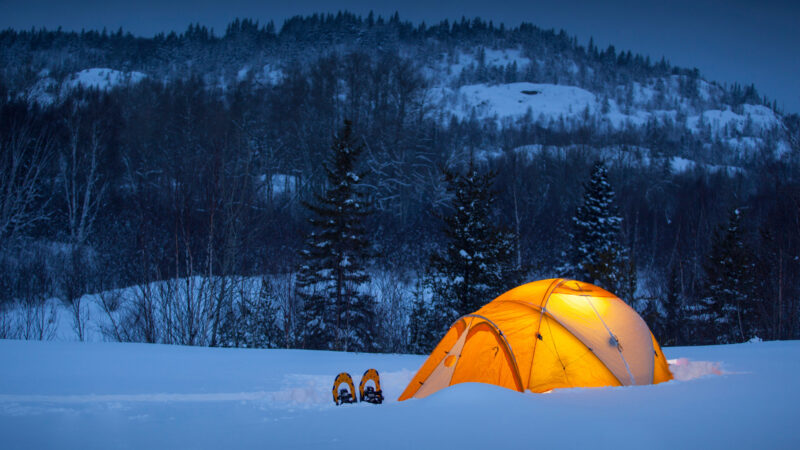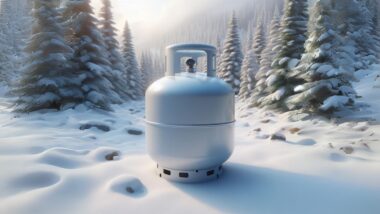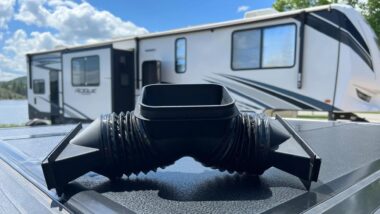Table of Contents Show
Are you an adventurer who loves to camp with fewer crowds and people in the off-season? If so, you need to know how to winterize your tent for safe camping in cold weather.
Today, we have five tips to help you stay safe and enjoy tent camping even in the snow. Let’s look at how to winterize your tent and embrace this experience of winter wonderland camping!
Can You Tent Camp in the Winter?
Although winter camping isn’t as popular as summer tent camping, many adventurers brave the cold and snowy conditions. It can be a beautiful adventure if you prepare well and have the right gear.
Whether you camp in Bryce Canyon National Park in Utah or Sleeping Bear Dunes National Lakeshore in Michigan, the surrounding landscapes transform into a magical winter wonderland. And you can be right in the middle of it.
Is Winter Tent Camping Safe?
If you don’t prepare, winter tent camping can be very dangerous. You must have the right gear to handle the extreme cold temperatures. However, as long as you plan, winter tent camping can be safe.
There are inherent risks like any outdoor activity, but knowing how to prepare for winter conditions will enable you to enjoy camping for several nights. Plus, you don’t have to deal with crowded campgrounds, trails, or parking lots.
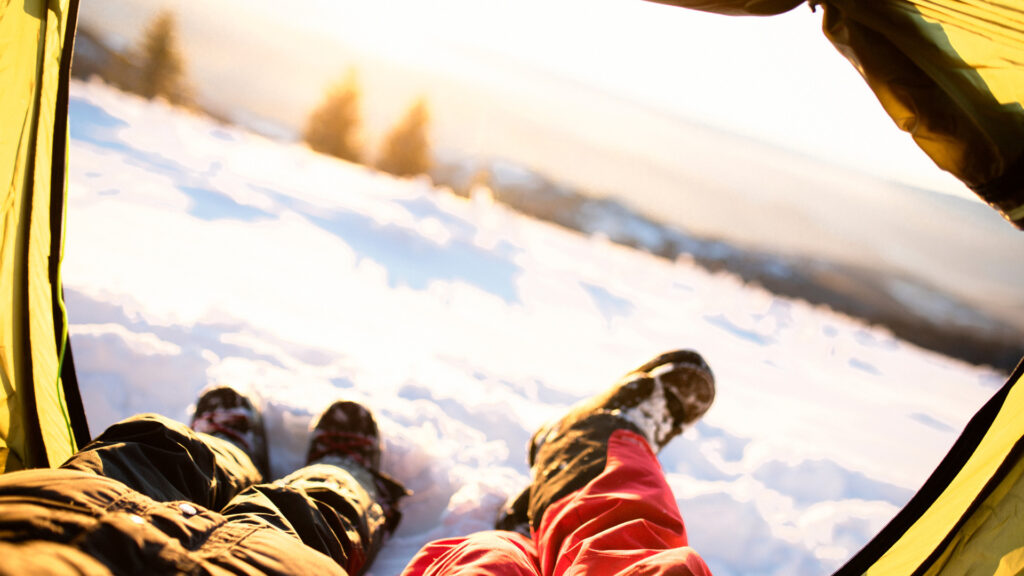
Are There Special Winter Camping Tents?
There are tents designed for winter camping. For example, the Mountain Hardwear Trango 2 Tent can shelter two campers in harsh, alpine conditions. It’s a four-season tent that’s weather-tight. The North Face VE 25 Tent is another four-season option with a fully taped nylon floor. These tents are expensive, but if you plan on winter camping, you need a tent that protects you from extreme weather conditions.
5 Tips to Winterize Tent for Cold Camping
You’ll need more than just a four-season tent for cold camping. We have five tips to help you winterize your tent so you can enjoy an entire season of cold-weather camping.
1. Choose an Ideal Camping Location
No matter how insulated your tent is, you want to choose a camping location shielded from the wind and snow. Wind chill can make for a frigid, uncomfortable night.
So pitch your tent near shrubbery or a large rock formation. You could also use snow to build a wall around the tent since snow is an excellent insulator.
Keep in Mind: Are Walmart Camping Tents Any Good? Let’s find out!
2. Add Insulation Under Tent
Once you’ve chosen an ideal camping location, one way to winterize your tent is to add ground insulation. This added layer will also keep the bottom of your tent from getting wet. A sleeping pad will also help insulate the floor layer while providing a more comfortable sleeping space.
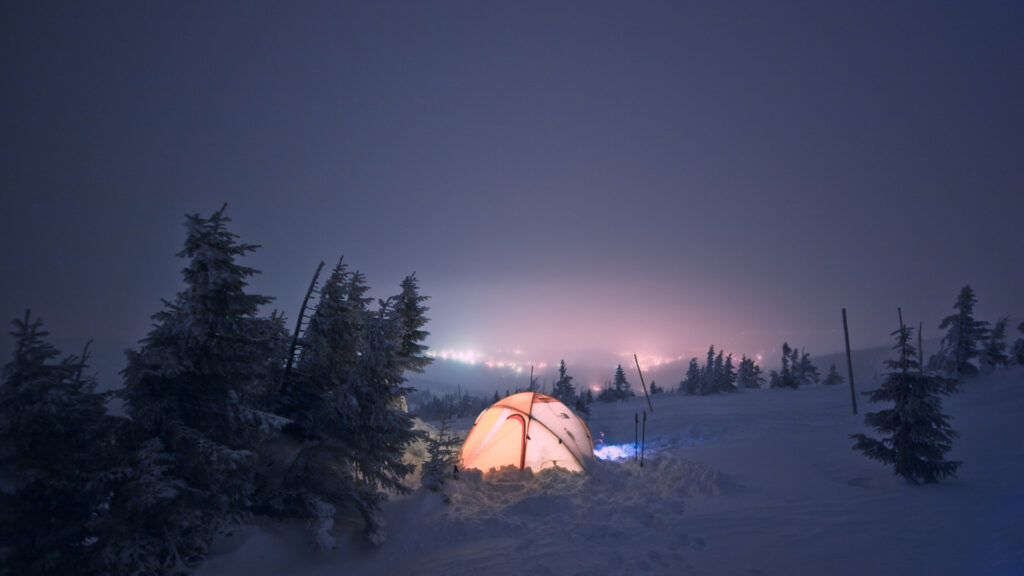
3. Add Insulation Above Tent
Next, add insulation on top of the rainfly. This could be another rainfly or a foil thermal blanket. A thermal blanket will protect your tent from rain or snow and reflect heat into the tent, preventing the warmth from escaping.
4. Line the Interior
One way to winterize your tent’s interior is to line it with insulating fabric. This doesn’t have to be anything special or expensive. Just grab fleece blankets and secure them to the walls of your tent. This will keep the inside of your tent dry and warm.
5. Use a Tent-Safe Heater
Finally, don’t winter camp without a tent-safe heater. Always do your research when choosing the right heater for tent camping. Also, know what the tent manufacturers say about using heaters inside their tents. For more information, check out our article “The Safest Tent Heaters for Camping.”
Keep in Mind: Prepare your RV for winter camping with one of these top 5 RV winterizing kits!
Other Ways to Stay Warm While Winter Camping
Winterizing your tent is essential to safe camping during cold months. This is why planning is so important. You can’t just show up with a tent and sleeping bag like you can in the summer.
Other ways to stay warm include choosing the right sleeping bag, using heat packs, and wearing thermal base layers. You should also find a sleeping bag that’s rated for extreme cold. Just like your tent should be rated for four seasons, your sleeping bag should also be designed for cold temperatures.
Heat packs are easy to throw in your backpack. They are inexpensive and don’t take up much space. You’ll be thankful to have them when your fingers or toes get cold!
Finally, although you might want to sleep with three or four layers of clothing during the winter, it’s better to sleep in thermal base layers only so your sleeping bag can retain your body heat. But make sure to wear a head covering.
Stay Safe During Cold Temperatures: Winterize Your Tent
Camping amidst the glistening snowscape of red rocks and canyons in the Southwest is magical. A tent overlooking the snow-covered Rockies, Smokies, or Poconos will offer captivating views you just can’t experience during other times of the year.
But you must winterize your tent to enjoy cold-weather camping safely. We hope these tips help you prepare for your next winter tent camping adventure!
Are you a winter camping pro? Do you have any tips to add?




